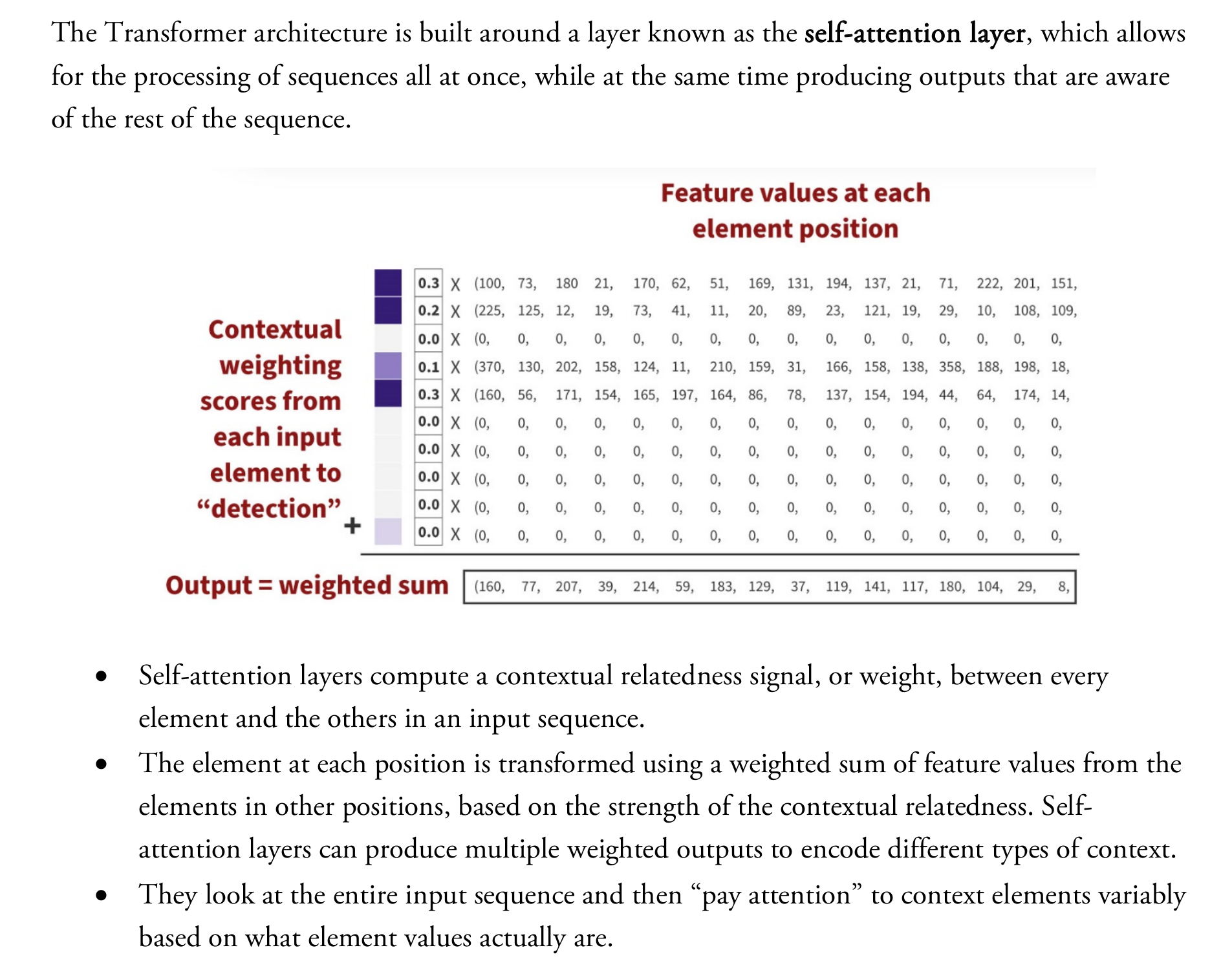🔍 Understanding Self-Attention in Transformers: A Visual Breakdown #
This document summarizes key questions about self-attention, embedding vectors, positions, and the input matrix in Transformers — using the image you provided as the foundation.
🧠 What Is Happening in the Diagram? #
The figure shows how self-attention computes the output for a specific position (“detection”) by:
- Generating attention weights between that position and all other positions.
- Using those weights to compute a weighted sum of the input feature vectors.

🧩 Key Concepts Explained #
| Term | Meaning |
|---|---|
| Element | A token or word in the input sequence. Each row in the matrix is one. |
| Position | The index (0-based) of each element. Used to maintain order. |
| Sequence | The full ordered list of elements (e.g. a sentence). |
| Word | The natural-language item each element may represent. |
| Feature Values | Vector representation of the element (its embedding). |
- While element and position are tightly linked (1:1), they are conceptually distinct:
- Position = slot/index
- Element = content in that slot
🧮 How Attention Scores Are Computed #
Self-attention uses scaled dot-product attention:
- Input matrix X (from the figure) holds all embeddings.
- It is projected into Q, K, V using learned weights.
- Attention scores =
dot(Q[i], K[j]) / sqrt(d_k) - Softmax turns scores into attention weights.
- Output vector = weighted sum over all V[j], using those weights.
The purple bar on the left in the figure shows these attention weights (e.g., [0.3, 0.2, 0.1, 0.3, 0, ...]).
✅ What the Image Represents #
| Part of Image | Concept in Transformer |
|---|---|
| Right-side matrix (rows) | Input feature matrix X |
| Each row | One input element (word/token) |
| Left-side purple weights | Attention scores for one position |
| Final row at bottom | Output vector (weighted sum of inputs) |
Prepared with explanations from ChatGPT based on your questions.